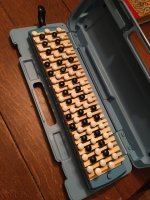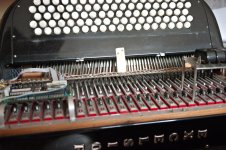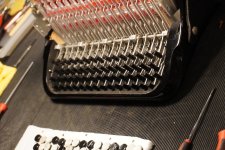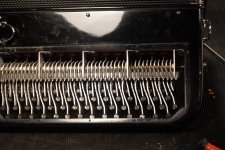David Colpitts
Member
Hello, All.
I am a relative newcomer, and very curious about CBA mechanics. Is there a place/site/book I might see to get an idea about how the buttons' force goes through its path of levers/wires/pads/springs, etc? To be honest, I am thinking of making a conversion to CBA from a simple piano-style melodica, to get something like an "Accordina" but at low-cost DIY prices. Any suggestions will be appreciated! For the record, I have successfullly converted 5 or 6 keyboards to the (also isomorphic) Janko-style keyboard, but that just requred a little woodworking atop the extant keys. I suspect not so simple to get from piano-style to CBA, where identical notes end up diagonally displaced from each other, and not just horizontally/vertically, like the Janko.
I am a relative newcomer, and very curious about CBA mechanics. Is there a place/site/book I might see to get an idea about how the buttons' force goes through its path of levers/wires/pads/springs, etc? To be honest, I am thinking of making a conversion to CBA from a simple piano-style melodica, to get something like an "Accordina" but at low-cost DIY prices. Any suggestions will be appreciated! For the record, I have successfullly converted 5 or 6 keyboards to the (also isomorphic) Janko-style keyboard, but that just requred a little woodworking atop the extant keys. I suspect not so simple to get from piano-style to CBA, where identical notes end up diagonally displaced from each other, and not just horizontally/vertically, like the Janko.





